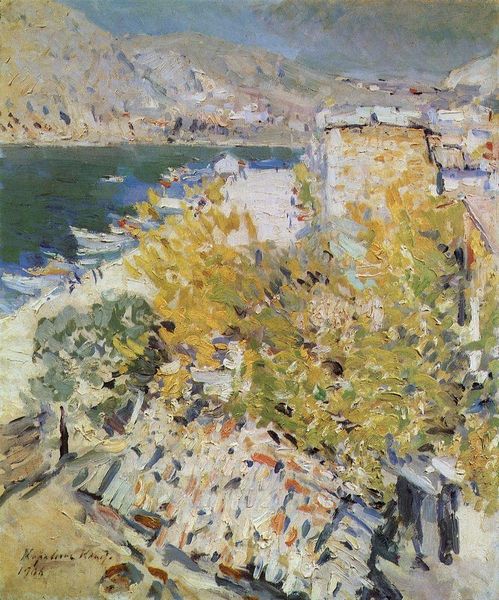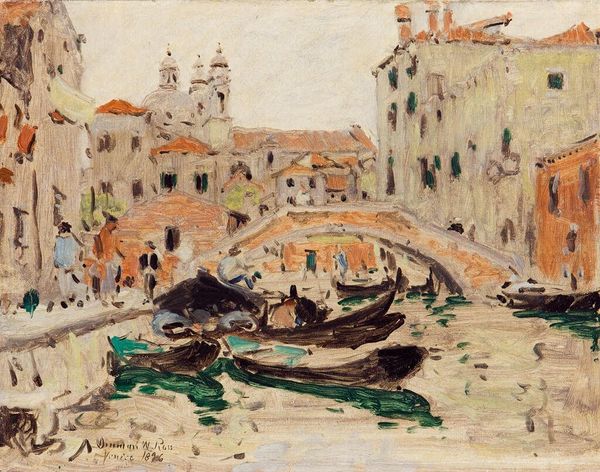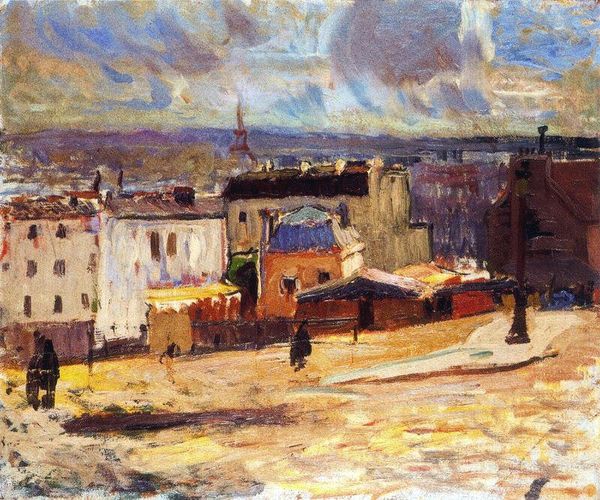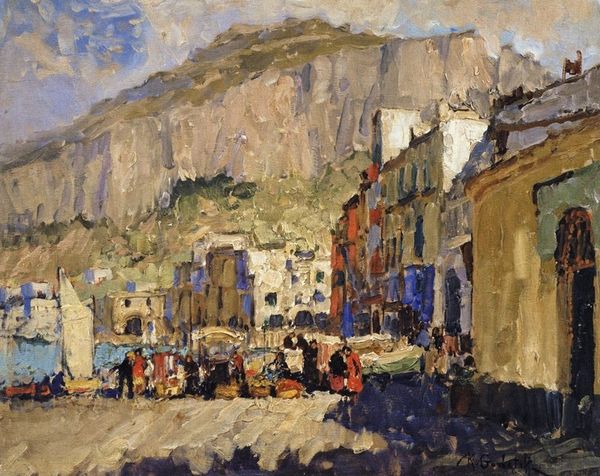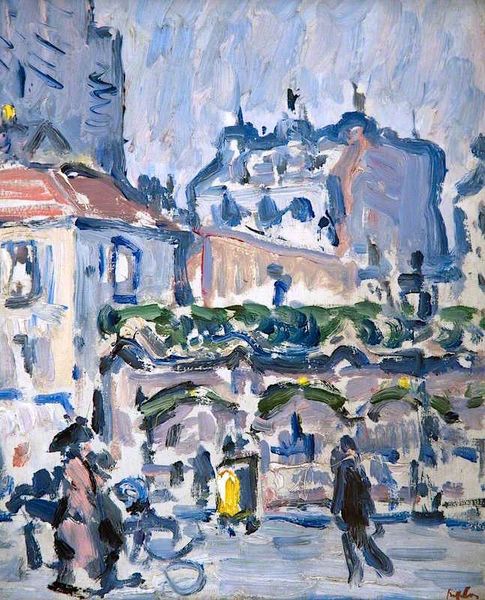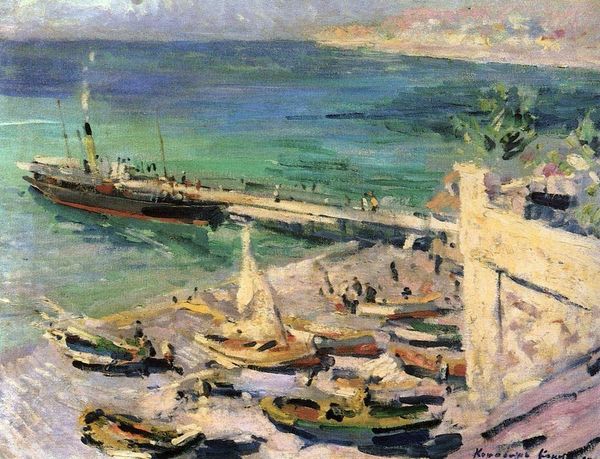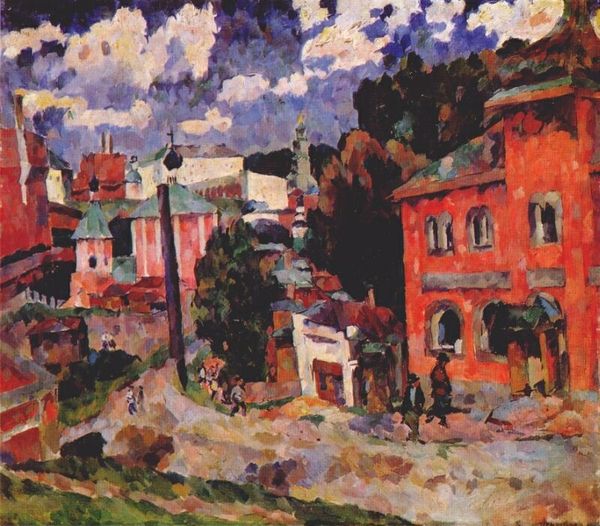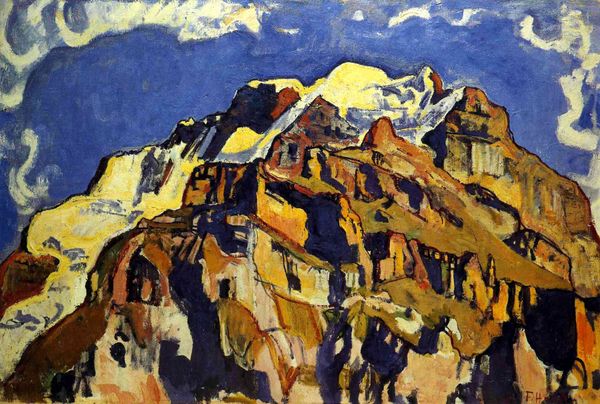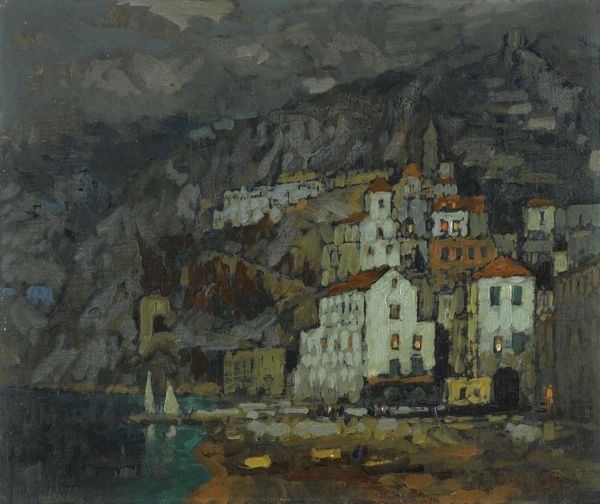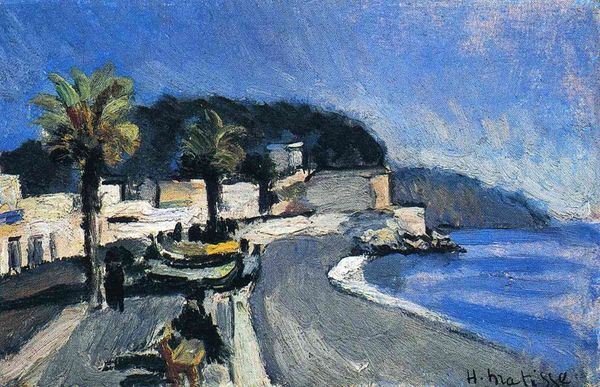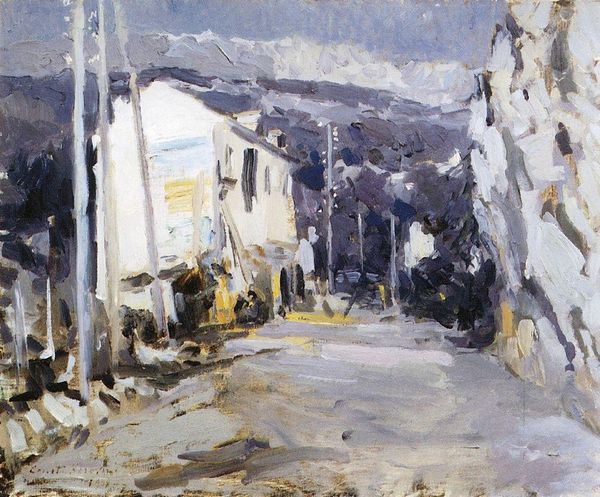
Copyright: Public domain
Curator: Looking at "Alupka," painted in 1912 by Konstantin Alexeevich Korovin, I'm immediately struck by how the thick brushstrokes almost sculpt the light. What's your initial impression? Editor: A flurry of bleached color and architectural disarray. The painting, rendered with oil paint, makes me uneasy. It looks as if some monumental event has occurred. Is this the depiction of chaos, the day after something cataclysmic? Curator: While chaos isn’t the overriding visual, I’m keen to discuss the layers of meaning possibly encoded in the cityscapes he painted; during this period, Russian symbolism intertwined with social unrest, a sort of premonition. We should remember Korovin’s ties to the Symbolist movement as a stage designer. Perhaps these coastal retreats acted as his mental escapes, holding utopian suggestions, as a site for renewal? Editor: Absolutely. He was witness to turbulent periods, but during that period artists often idealized a vanishing, quaint Russia. But his method of painting also adds a layer, doesn't it? Consider how Korovin was part of the “plein-air” movement: his application mirrors how urban and rural lives evolved during times of radical reform. Curator: He worked outdoors to seize transient moments, infusing the urban backdrop with ephemeral light and atmosphere. It reflects a broader fascination of Impressionism, emphasizing sensation, almost to mirror feelings. The human imprint interests me too – he makes marks. I see them relating to a universal feeling about how cities emerge, and change, acting as historical records of communities. Editor: And what happens to places during tumultuous transformations? The image embodies something uneasy because of how history inevitably becomes layered. Despite what looks joyful on the surface, such energetic brushstrokes perhaps point towards that era's simmering tensions, reflecting on political landscapes of change across Tsarist Russia, and on the eve of global conflict? Curator: Indeed. The bright color could represent hopes for resolution. Overall, Korovin provides a compelling glimpse into societal changes via this beautiful yet complex landscape, through color, place, and visual marks that resonate with enduring emotions. Editor: For me, these broken brushstrokes show that no matter what's imposed, even if we are up against chaos, places remember because those marks still stand!
Comments
No comments
Be the first to comment and join the conversation on the ultimate creative platform.
